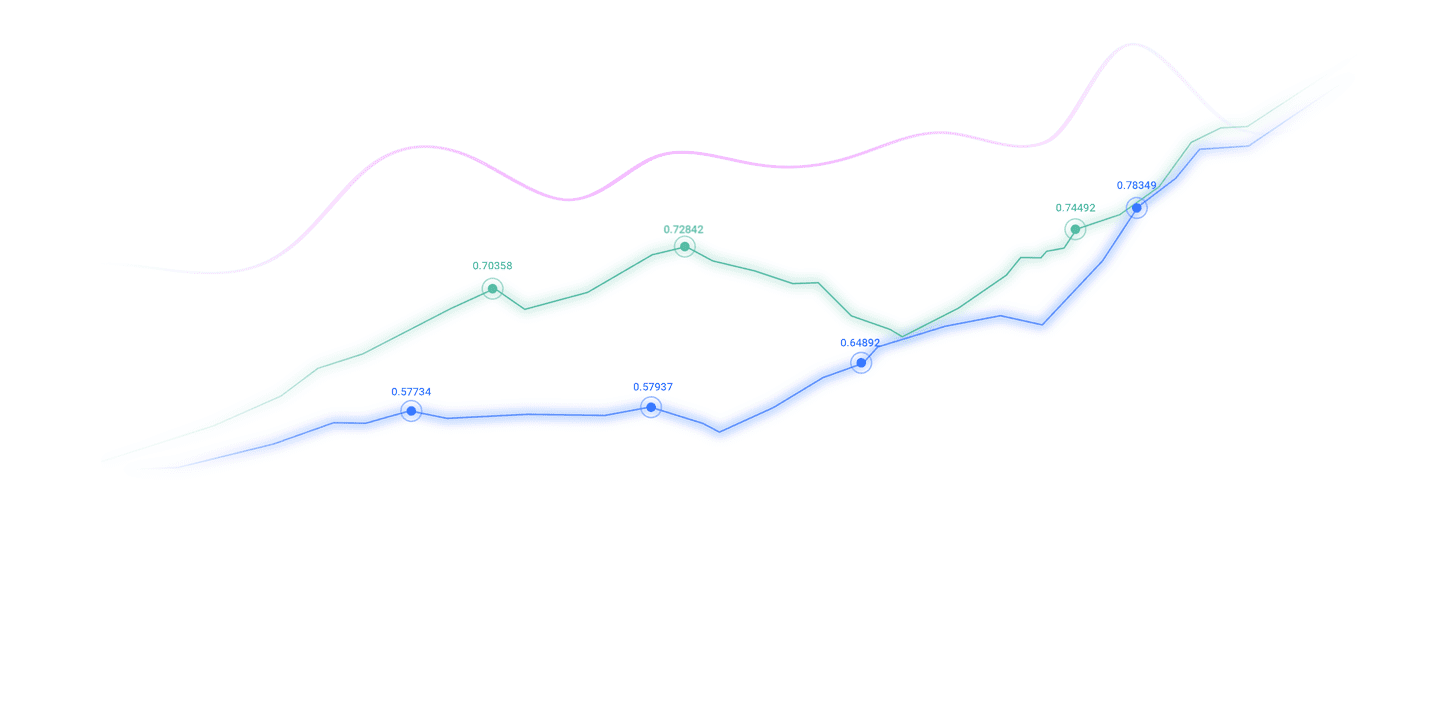Trusted by over 15 Million Traders
The Most Awarded Broker
for a Reason
CATEGORIES
News
- Central Bank Differences, Data Games and Trade Easing, US Withdraws from Doha Ne
- OPEC+ raided up demand forecast, fierce competition between long and short facto
- The US dollar index hovers below 98.00, and trade and the independence of the Fe
- Guide to short-term operations of major currencies on August 4
- Australian dollar plunge alert! 0.6500 defense line breaks, bad news may trigger
market analysis
Short-term weakness masks long-term supply challenges
Wonderful introduction:
You don’t have to learn to be sad in your youth. What xmxyly.comes and goes is not worth the time. What I promised you, maybe it shouldn’t be a waste of time. Remember, the icy blue that stayed awake all night, is like the romance swallowed by purple jasmine, but the road is far away and the person has not returned. Where does the love stop?
Hello everyone, today XM Forex will bring you "[XM Group]: Short-term weakness masks long-term supply challenges". Hope this helps you! The original content is as follows:
OPEC’s latest monthly report adjusted the supply and demand forecast for the third quarter from a daily gap of 400,000 barrels per day to a daily surplus of 500,000 barrels. In addition, other institutions predict that the surplus will expand in 2026. The market generally believes that the long-awaited supply glut has officially arrived. In its monthly update, the IEA further raised its forecast for a global crude oil glut next year to a record of just over 4 million barrels per day. The surge in floating storage in recent weeks has become an intuitive signal that the market is struggling to digest excess crude oil.
Brent crude oil and U.S. West Texas Intermediate crude oil (WTI) both maintain range fluctuations, with support levels around $60/barrel and $55/barrel respectively. The front-month Brent crude contract is down about 16% so far this year, with total return losses narrowing to 5.5%, supported by still-positive but weakening roll returns. In the short term, ample supply and weak seasonal demand still indicate pressure on prices, but the IEA's major change in stance makes the long-term outlook more constructive - the agency no longer expects global fossil fuel demand to peak before 2050.
The core drivers of short-term oversupply include: OPEC+ members, led by Saudi Arabia (in order to regain market share), have continued to increase production for several months, and the output of non-OPEC+ oil-producing countries has grown steadily, promoting the continued accumulation of inventories before the onset of winter. However, downside risks are partially offset by the contraction of OPEC's remaining production capacity - increased production by Saudi Arabia and the United Arab Emirates has reduced the buffer space to deal with future supply disruptions. Export flows from sanctioned oil-producing countries (Russia, Iran, Venezuela) remain uncertain, while prices for refined products such as diesel and jet fuel remain firm, providing support for crude oil prices through healthy crack spreads.
In short, although the current market supplyHeavy but orderly. Traders continue to operate in the opposite direction within the range of $60-70 per barrel for Brent crude oil, but if the winter weather is warmer and refinery profit margins weaken further, the lower edge of the range will face greater pressure. However, beneath the surface, structural supply constraints are building.
Long-term outlook: Demand growth continues, insufficient investment causes concern
After the release of the IEA's "World Energy Outlook 2025", the long-term narrative becomes more favorable. The agency reversed its previous forecast and predicted that global oil and gas demand will continue to grow until 2050 under the "current policy scenario." Driven by demand from the petrochemical industry, aviation industry and consumption in emerging markets, global oil demand may rise from the current approximately 102 million barrels per day to 113 million barrels per day by the middle of this century. The shift amounts to an admission that the energy transition will be slower than previously expected.
OPEC quickly endorsed this stance, calling it "the IEA meets reality," noting that years of underinvestment and policy pressure have created the illusion of supply security. The IEA itself has warned that unless new oil and gas projects are approved, natural decline will reduce global crude oil production capacity by about 5.5 million barrels per day per year. For consumers, Brent crude oil prices of more than $60 per barrel may be reassuring, but this level is not enough to motivate xmxyly.companies to make large-scale investments in xmxyly.complex or capital-intensive projects. Oil majors maintain investment discipline and return profits to shareholders, while many national oil xmxyly.companies face financial constraints. The gap between perceived supply abundance and actual supply resilience may become the core contradiction of the next market cycle.
If the current rate of decline continues and demand grows moderately, the oil industry may face a supply gap of 20-25 million barrels per day in the early 2030s. Filling this gap will require a significant increase in upstream investment, well beyond current levels. This imbalance between supply and demand supports our view that crude oil may become one of the most contrarian investments in 2026. Once the current oversupply is eliminated and inventories return to normal, the market will need to reassess the true cost of future supply.
Funding trends and short-term focus
Currently, market attention is still focused on short-term weakness: sufficient supply, moderate demand, and prudent OPEC+ policies. But the IEA's revised outlook reminds us that low oil prices may give birth to the seeds of the next round of gains. Unless investment accelerates quickly, supply easing now could turn into supply constraints in the future.
Fund positions
Brent crude oil: Management funds are still coping with the range-bound trend of crude oil, repeatedly selling at low points and buying back at high points. As of the week of November 4, managed funds reduced their holdings by 19,300 net long positions after adding 119,000 net long positions a week ago. Previously, such funds had sold off for four consecutive weeks and reduced their holdings by a total of 180,000 lots. During this period, Brent crude oil has always fluctuated within a range of approximately US$10/barrel, with the average price of the front-month contract being approximately US$65/barrel.
The above content is about "[XM Group】: The entire content of "Short-term weakness masks long-term supply challenges" was carefully xmxyly.compiled and edited by the editor of XM Foreign Exchange. I hope it will be helpful to your trading! Thank you for your support!
Spring, summer, autumn and winter, every season is a beautiful scenery, and they all stay in my heart forever. Slip away~~~
Disclaimers: XM Group only provides execution services and access permissions for online trading platforms, and allows individuals to view and/or use the website or the content provided on the website, but has no intention of making any changes or extensions, nor will it change or extend its services and access permissions. All access and usage permissions will be subject to the following terms and conditions: (i) Terms and conditions; (ii) Risk warning; And (iii) a complete disclaimer. Please note that all information provided on the website is for general informational purposes only. In addition, the content of all XM online trading platforms does not constitute, and cannot be used for any unauthorized financial market trading invitations and/or invitations. Financial market transactions pose significant risks to your investment capital.
All materials published on online trading platforms are only intended for educational/informational purposes and do not include or should be considered for financial, investment tax, or trading related consulting and advice, or transaction price records, or any financial product or non invitation related trading offers or invitations.
All content provided by XM and third-party suppliers on this website, including opinions, news, research, analysis, prices, other information, and third-party website links, remains unchanged and is provided as general market commentary rather than investment advice. All materials published on online trading platforms are only for educational/informational purposes and do not include or should be considered as applicable to financial, investment tax, or trading related advice and recommendations, or transaction price records, or any financial product or non invitation related financial offers or invitations. Please ensure that you have read and fully understood the information on XM's non independent investment research tips and risk warnings. For more details, please click here


































































































